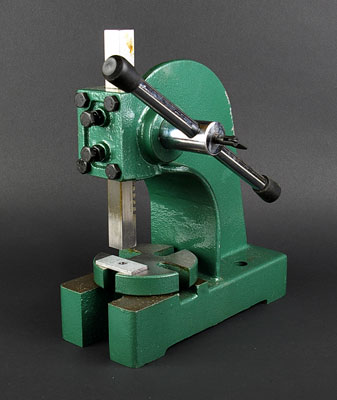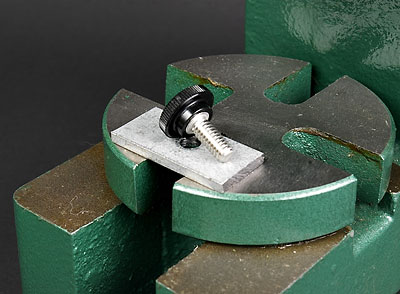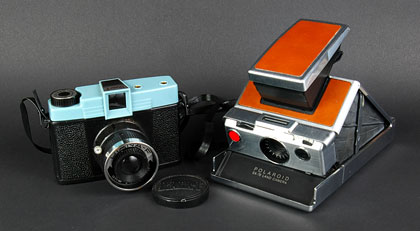|
| |
Archives
ethnic cleansing in america
The Cleansing of New Orleans
Half the City's Poor Now Permanently Displaced
|
Government reports confirm that half of the working poor, elderly and disabled who lived in New Orleans before Katrina have not returned. Because of critical shortages in low cost housing, few now expect tens of thousands of poor and working people to ever be able to return home.
[...]
In the most blatant sign of government action to reduce the numbers of poor people in New Orleans, the U.S. Department of Housing and Urban Development (HUD) is demolishing thousands of intact public housing apartments. HUD is spending nearly a billion dollars with questionable developers to end up with much less affordable housing. Right after Katrina, HUD Secretary Alphonso Jackson predicted New Orleans was "not going to be as black as it was for a long time, if ever again." He then worked to make that prediction true.
[...]
United Nations officials recently called for an immediate halt to the demolitions of public housing in New Orleans saying demolition is a violation of human rights and will force predominately black residents into homelessness. "The spiraling costs of private housing and rental units, and in particular the demolition of public housing, puts these communities in further distress, increasing poverty and homelessness," said a joint statement by UN experts in housing and minority issues. "We therefore call on the Federal Government and State and local authorities to immediately halt the demolitions of public housing in New Orleans." Similar calls have been made by Senators Clinton and Obama. Despite these calls, the demolitions continue.
| |
[more]
camera straps
For some time I've been looking for a black thumb screw for my tripod mount straps at gordy's camera straps. I finally found a great solution: Shear-Loc knobs. They are pressed on to a socket head cap screw and make a strong, reasonable cost, effective thumb screw. The best way to press it on is with an arbor press.

I love the look of machine shop tools. I bought this one at Grizzly Industrial. It's a small 1/2 ton arbor press. It's designed to apply a stong force in one direction. I made the little plate with the hole in it to hold the socket head cap screw in the right place while pressing on the Shear-Loc knob. More pictures at Some assembly required.

The final product with the knob and socket head cap screw joined. This strap making business keeps getting bigger and more complicated. I've started training a friend to do straps so that I can offload some. Sales keep going up and I have to do something or you will never see me here again! Don't misunderstand me, this is a good problem to have. Most businesses I know of are not doing well while my strap business is booming. I still have three new product lines I'm developing. One should be going up next week. Stay tuned.
global climate change
'Enjoy life while you can'
Climate science maverick James Lovelock believes catastrophe is inevitable, carbon offsetting is a joke and ethical living a scam. So what would he do?
|
In 1965 executives at Shell wanted to know what the world would look like in the year 2000. They consulted a range of experts, who speculated about fusion-powered hovercrafts and "all sorts of fanciful technological stuff". When the oil company asked the scientist James Lovelock, he predicted that the main problem in 2000 would be the environment. "It will be worsening then to such an extent that it will seriously affect their business," he said.
"And of course," Lovelock says, with a smile 43 years later, "that's almost exactly what's happened."
Lovelock has been dispensing predictions from his one-man laboratory in an old mill in Cornwall since the mid-1960s, the consistent accuracy of which have earned him a reputation as one of Britain's most respected - if maverick - independent scientists. Working alone since the age of 40, he invented a device that detected CFCs, which helped detect the growing hole in the ozone layer, and introduced the Gaia hypothesis, a revolutionary theory that the Earth is a self-regulating super-organism. Initially ridiculed by many scientists as new age nonsense, today that theory forms the basis of almost all climate science.
| |
[more]
thanks to Neatorama
cameras

I have two new cameras from the 1970s. on the left is a Diana F, the original toy art camera. They were made from the early 1960s into the 1970s. I traded a couple of wrist straps for it. It makes 4x4 cm negatives on 120 roll film. A single element plastic lens makes for dreamy images and it comes with light leaks. Taping all seams is needed if you don't want the light leaks. Some do. There is a Flickr Diana Photography photo pool. The shutter is a little sticky but there are instructions for fixing it at ToyCamera. The F stands for flash. There is a little flash holder that inserts into the two holes on top of the camera. I need one. I haven't run any film through it yet.
Vern gave me the SX-70 two days before the announcement that Polaroid would cease production of all Polaroid film products next year. That was depressing news. This camera was made on October 11, 1973 during the A shift. I couldn't afford an SX-70 when they came out. In the late 1970s Polaroid made a series of plastic cameras that took SX-70 film, the first one being the Pronto!, which I had. I don't know where it went. I really liked it. Polaroid stopped making SX-70 film in 2006 but 600 film can be used with modification. The 600 film is two stops faster so a neutral density filter has to be used on the lens or the film to compensate. There was a 600 film, with ND filter, being made in the Netherlands but it has just now gone out of production. There are three options for accomodating the faster film. One is replacing a capicitor in the shutter circuit which will let you use faster shutter speeds but that is expensive to have someone do it right. The second is to put a neutral density filter over the lens. (The SX-70 is a SLR with TTL metering.) That dims the viewing. The third is to put a neutral density filter over the 600 film pack. Simple good! There are instructions. I have a ND filter and pack of 600 film on order. I'm excited. It's a sweet camera. Here is a Flickr Polaroid SX-70 photo pool.
update: I forgot to mention that one of the inspirations for asking for this SX-70 was André Kertész:The Polaroids.
iraq
U.S. Death Toll in Iraq War Hits 4,000
|
By the time Specialist Jerry Ryen King decided to write about his experiences in Iraq, the teen-age paratrooper had more to share than most soldiers.
In two operations to clear the outskirts of the village of Turki in the deadly Diyala Province, Specialist King and the rest of the Fifth Squadron faced days of firefights, grenade attacks and land mines. Well-trained insurgents had burrowed deep into muddy canals, a throwback to the trenches of World War I. As the fighting wore on, B-1 bombers and F-16s were called in to drop a series of powerful bombs.
Once the area was clear of insurgents, the squadron, part of the 82nd Airborne Division, uncovered hidden caches with thousands of weapons.
Two months later, Specialist King, a handsome former honors student and double-sport athlete from Georgia, sat down at his computer. In informal but powerful prose, he began a journal.
After 232 long, desolate, morose, but somewhat days of tranquility into deployment, I’ve decided that I should start writing some of the things I experienced here in Iraq. I have to say that the events that I have encountered here have changed my outlook on life...
The most recent mission started out as a 24-36 hour air-assault sniper mission in a known al-Qaida stronghold just north of Baghdad. We landed a few hours before daybreak and as soon as I got off the helicopter my night vision broke, I was surrounded by the sound of artillery rounds, people screaming in Arabic, automatic weapons, and the terrain didn’t look anything like what we were briefed. I knew it was going to be a bad day and a half.
Jerry Ryen King, journal entry, March 7, 2007
A month later, Specialist King was sitting inside his combat outpost, an abandoned school in Sadah, when suicide bombers exploded two dump trucks just outside the building. The school collapsed, killing Specialist King on April 23, 2007, along with eight other soldiers, and making the blast one of the most lethal for Americans fighting in Iraq.
| |
[more]
The First Sixth-Anniversary-of-the-Iraq-War Article
|
Please don't write in with a correction. I know just as well as you do that we're approaching the fifth, not the sixth, anniversary of the moment when, on March 19, 2003, George W. Bush told the American people:
"My fellow citizens, at this hour, American and coalition forces are in the early stages of military operations to disarm Iraq, to free its people and to defend the world from grave danger… My fellow citizens, the dangers to our country and the world will be overcome. We will pass through this time of peril and carry on the work of peace. We will defend our freedom. We will bring freedom to others and we will prevail."
At that moment, of course, the cruise missiles meant to "decapitate" Saddam Hussein's regime, but that killed only Iraqi civilians, were on their way to Baghdad. I'm perfectly aware that articles galore will be looking back on the five years since that day. This is not one of them.
Think of this piece as in the spirit of Senator John McCain's recent request that Americans not obsess about the origins of the Iraq War, but look forward. "On the issue of my differences with Senator Obama on Iraq," he typically said, "I want to make it very clear: This is not about decisions that were made in the past. This is about decisions that a president will have to make about the future in Iraq. And a decision to unilaterally withdraw from Iraq will lead to chaos."
The future, not the past, is the mantra, which is why I'm skipping next week's fifth anniversary of the Iraq War entirely. Now, let me ask you a future-oriented question:
What's wrong with these sentences?
On March 19, 2009, the date of the sixth anniversary of President Bush's invasion of Iraq, as surely as the sun rises in the East I'll be sitting here and we will still have many tens of thousands of troops, a string of major bases, and massive air power in that country. In the intervening year, more Americans will have been wounded or killed; many more Iraqis will have been wounded or killed; more chaos and conflict will have ensued; many more bombs will have been dropped and missiles launched; many more suicide bombs will have gone off. Iraq will still be a hell on Earth.
Prediction is, of course, a risky business. Otherwise I'd now be commuting via jet pack through spire cities (as the futuristic articles of my youth so regularly predicted). If you were to punch holes in the above sentences, you would certainly have to note that it's risky for a man of 63 years, or of any age, to suggest that he'll be sitting anywhere in a year; riskier yet if you happen to live in those lands extending from North Africa to Central Asia that Bush administration officials used to call the "arc of instability" -- essentially the oil heartlands of the planet -- before they turned them into one. It's always possible that I won't be sitting here (or anywhere else, for that matter) on March 19, 2009. Unfortunately, when it comes to the American position in Iraq, short of an act of God, the sixth anniversary of George Bush's war of choice is going to dawn much like the fifth one.
| |
[more]
All I can say is what I felt standing at the Vietnam War Memorial: What a fucking waste!
update
I suppose I should show up here once in awhile. Except for noting the 5th anniversary of Iraq, it's been 3 weeks. Sorry about that, but reality has been getting in the way. (Don't you hate that when it happens to you?) Weekly visits to see Zoe's mom at the hospital (Alzheimer's) takes its toll. I usually start cooking Saturday night (squash souffle). Sunday is getting everything together as well as cooking the other dishes and packaging snacks. 5 hours driving round trip and 1 to 2 hours there. We are pretty tired on Monday. We took this Sunday off. We will try to go down tomorrow or Wednesday. The good news is that her new meds seem to be working. She is not so combative. The other good news is that Sunday before last Zoe's nephew Gregg was in town for business and wanted to see his Grandomother. We had a wonderful visit. Gerry didn't recognize Gregg but thought he was pretty cute. After I had finished serving I switched places with Greg so he could be next to his Grandmother. While I don't know if she knew that Gregg was her grandson, there was a connection and they held hands. It was really good for Gerry. She was talking a mile a minute in her nonsense but was having a good time.
The bad news is that Zoe's doctor left town and she is having a problem with the other doctors taking her on in that she is complicated (Fibromyalgia and IBS and has medical records that are in two volumes.) This has been traumatic. It includes verifying to her insurance that she should still be on disability. Her former doctor would sign the form annually but now she doesn't have a doctor that knows her. This has been stressing us out. She just got off the phone with the business manager of the clinic and she thinks someone will sign the form. Our medical system really sucks.
If that wasn't enough, my camera strap sales have gone through the proverbial roof. This is a good problem but it does take time keeping up with it all. And I'm still working on three new product lines, one which is almost ready to put up. I did get up a modification of my tripod mount straps, at last. Hopefully I will get some links up today in between making straps. Stay tuned.
|
|
|
|




